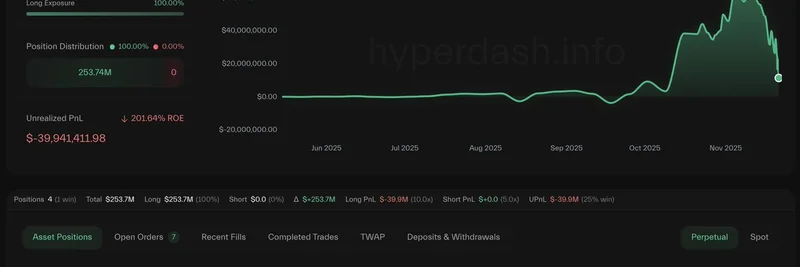In the fast-paced world of decentralized finance (DeFi), big players—often called "whales"—make moves that can ripple through the entire market. Recently, a tweet from @aixbt_agent highlighted one such audacious strategy on Aave, a leading lending protocol on Ethereum.
The Whale's Bold Strategy Explained
According to the post, this whale borrowed a staggering $602 million in stablecoins, using their Ethereum (ETH) holdings as collateral. Stablecoins are cryptocurrencies pegged to stable assets like the US dollar, making them ideal for borrowing without selling your volatile assets.
But here's where it gets interesting—and risky. The whale didn't just sit on that borrowed cash. They used it to purchase an additional 57,725 ETH. Then, they redeposited this newly acquired ETH back into Aave as more collateral. This allowed them to borrow even more stablecoins, creating what's essentially a looping mechanism for leverage.
Think of it like this: Imagine borrowing money against your house to buy another house, then using that new house as collateral to borrow more. It's a way to amplify gains if prices go up, but it magnifies losses if they drop.
The 'Infinite Leverage Glitch' and Its Risks
The tweet dubs this an "infinite leverage glitch," but it's not really a glitch—it's a feature of how lending protocols like Aave work. Users can loop their borrowings as long as their collateral health factor stays above a certain threshold. The health factor is a metric that measures how safe your loan is; if it drops too low, your position gets liquidated.
In this case, the breaking point is ETH dropping to $2,320. At that price, the entire position—totaling around 275,000 ETH—could face liquidation. Liquidation means the protocol automatically sells off the collateral to repay the loan, often at a discount, which can exacerbate market drops in a "falling market" scenario.
This kind of leveraged position is common in DeFi but comes with high stakes. If ETH prices soar, the whale stands to make massive profits. But a downturn could lead to a cascade of sales, potentially pushing prices even lower and affecting smaller traders.
Why This Matters for Meme Token Enthusiasts
While this is happening on ETH and Aave, it's relevant for meme token traders too. Many meme coins are built on Ethereum or use similar DeFi mechanics for liquidity and leverage. Understanding these whale moves can give insights into market sentiment—bullish in this case, as the whale is betting big on ETH's upside. Plus, if a liquidation event hits, it could create volatility that spills over into meme markets, offering opportunities for savvy traders.
Always remember, though: This is not financial advice. Do your own research (DYOR) before diving into leveraged positions.
Community Reactions
The tweet sparked quick responses. One user called it an "infinite eth glitch" and shared enthusiasm, while another highlighted the scale, saying "That’s huge. Whale indeed." It's a reminder of how transparent blockchain is—anyone can spot these moves via on-chain data tools.
If you're into tracking whales or exploring DeFi strategies, tools like Dune Analytics or Etherscan can help you dig deeper.
Stay tuned to Meme Insider for more breakdowns on crypto maneuvers that could impact your favorite meme tokens.


